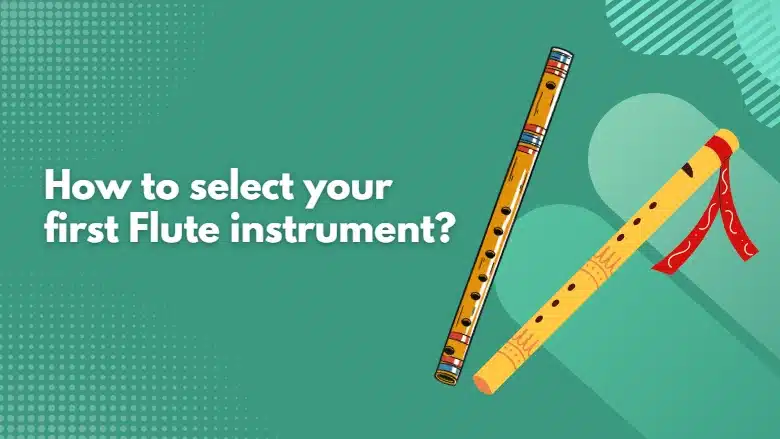For a beginner selecting the first carnatic or hindustani flute is a daunting task as it involves fair amount of understanding of different types of flute. In this blog we will explore what are the key features to look when anyone has to buy a flute.
Flutes are one of the earliest musical instruments by mankind. The earliest usage of flutes dates back to about 35000 years ago, a flute made of animal bone found as fossil in Russia. Flute is the musical instrument that is very closest to human vocal chords, and was probably the first instrument used by mankind to produce music.
A flute is a wind instrument. The classical Indian flute is made with bamboo and the instrument is used both in Carnatic and Hindustani styles.
Carnatic style is played in five southern states of India – Tamil Nadu, Karnataka, Kerala, Andhra Pradesh & Telengana. Hindustani flute better known as bansuri flutes are played in West, North & Eastern parts of India.
In western music the flute is made of metal, mainly steel and instead of holes it has buttons that are to be pressed and played. There are some acrylic fibre flutes, which loses pitch over a period of time and it will create erratic sounds and purists don’t recommend them.
Difference Between Carnatic and Hindustani flute:
There are few major differences between carnatic and hindustani flutes. As a beginner it is important to understand, which style you are learning and pick a flute based on the style you are playing.
1. Number of Holes
- Flutes with one blowing hole and six fingering holes are used in Hindustani genre. Hindustani flutes are commonly called as bansuri flutes. They will also have optional seventh fingering hole on other side of the bansuri.
- Flutes with one blowing hole and 8 holes (including blowing holes) are used for Carnatic music genre. The last hole is used for tuning.
Both the above flutes come in 12 numbers one for each note of the key, so if we start with C note then it is : C, C#, D, D#, E, F, F#,G, G#, A, A# and B. The length of the flute is inversely proportional to the scale of the flute, that is, scale C flute is the longest flute and scale B the shortest flute in length.
2. Type of Wood
Carnatic flutes are made from a special type of bamboo found in Kerala, parts of Karnataka and Kanyakumari. Bansuri or hindustani flutes are made from’ white’ wood or bamboo found in Assam and parts of Uttarkhand. The woods used for Carnatic flute are thicker, where as the woods used Hindustani flute are lighter bamboo.

Whatever style you play, it is important that you play with natural wood style. You can find flutes made up of plastic, acrylic or related material. However the tone of the natural wood is far superior to that of plastic flutes.
3. Thickness of Wood
If you check a flute of a same key of Carnatic flute or bansuri, you will find that thickness of wood of carnatic flute is higher that of a hindustani flute. Generally as dig deeper you will understand this also has influence on the style of playing be it hindustani or carnatic. In carnatic some of the songs are played with a ‘thicker’ tone and this you will understand only with experience and hearing lot of classical style flute music of both genres.
4. Natural vs Artificial (Cork) Nodes
All Carnatic flutes have natural nodes, where as Bansuri flute has a cork near the blowing hole to create that node artificially. This also has impact on the tone of the flute. The corks have to be kept in a specific place to get the tuning exactly at 440Hz and this is a special skill.
How to Select the Correct Carnatic or Hindustani Flute?
For a beginner picking the right flute is tricky as age poses a big confusion amongst the beginner learners.
To solve this check the following chart for purchasing the right flute according to the age of the learner. Generally the right age for learning flute is once a kid is 7 years and above. Given below is the scale one has to pick and the same is based on age of the student.
| AGE | SCALE OF FLUTE | SCALE OF SPARE FLUTE |
| 7 to 8 Years | G or G#(Any one only) | None |
| Above 8 upto 10 years | F or F#(Any one only) | None |
| Above 10 upto 15 years | F | E |
| 15 years and Above | D# | E |
As kids grow up the scale of the flute comes down, so we generally recommend one flute to start learning flute.
Buy Premium Handmade Carnatic Flutes
We sell premium handmade carnatic flutes. We ship these flutes globally and you can explore more flute prices in our Online Flute Store.































